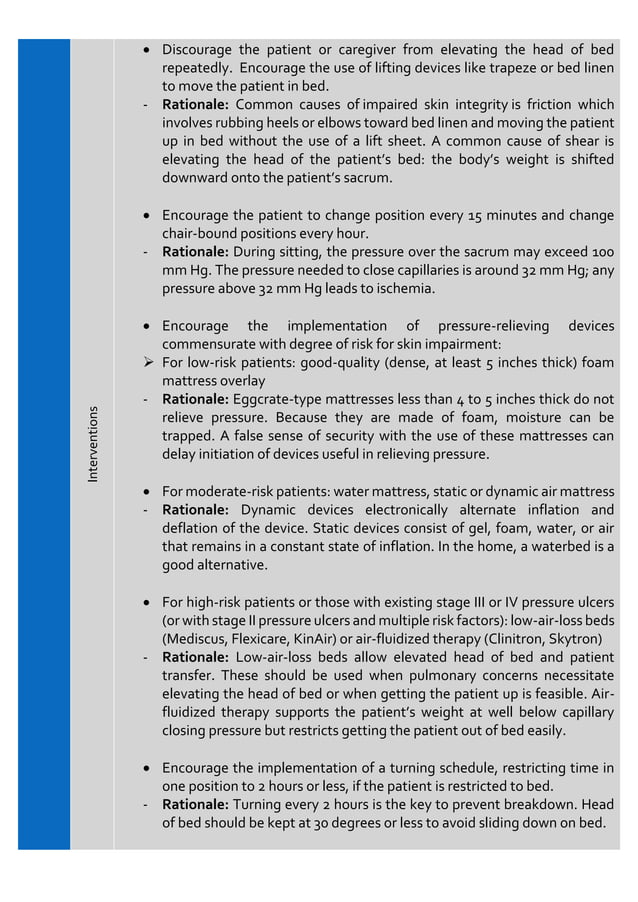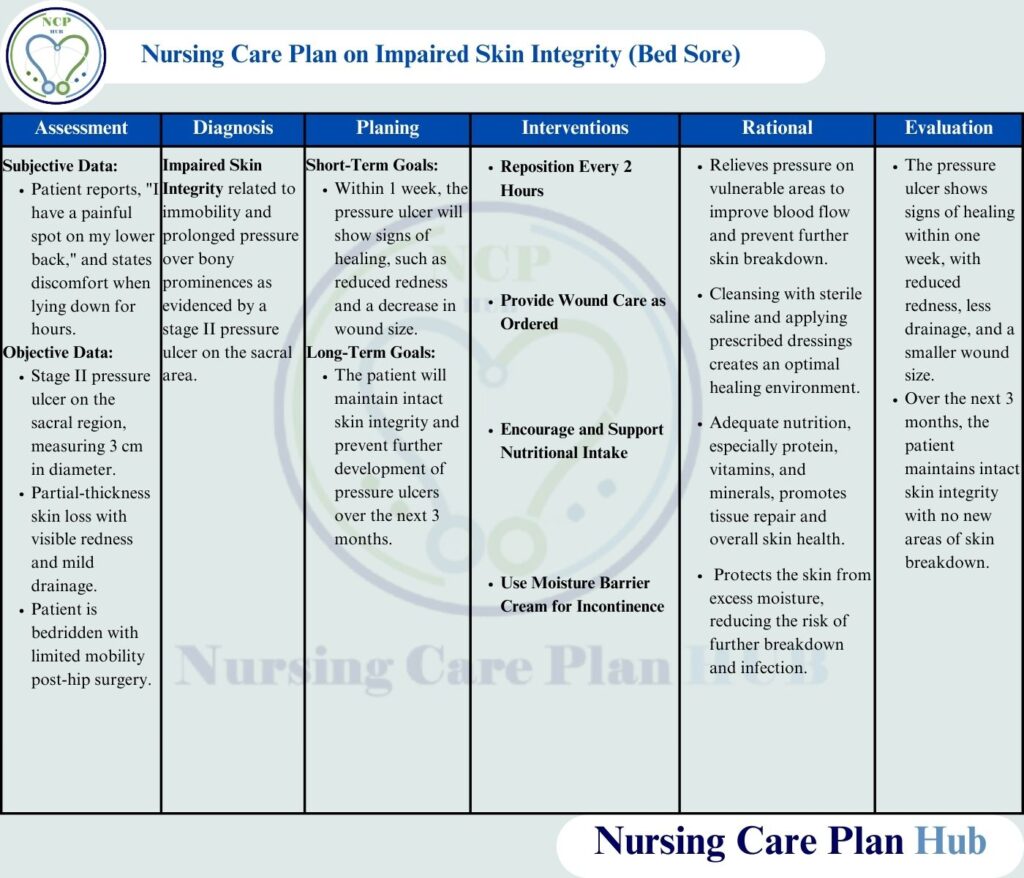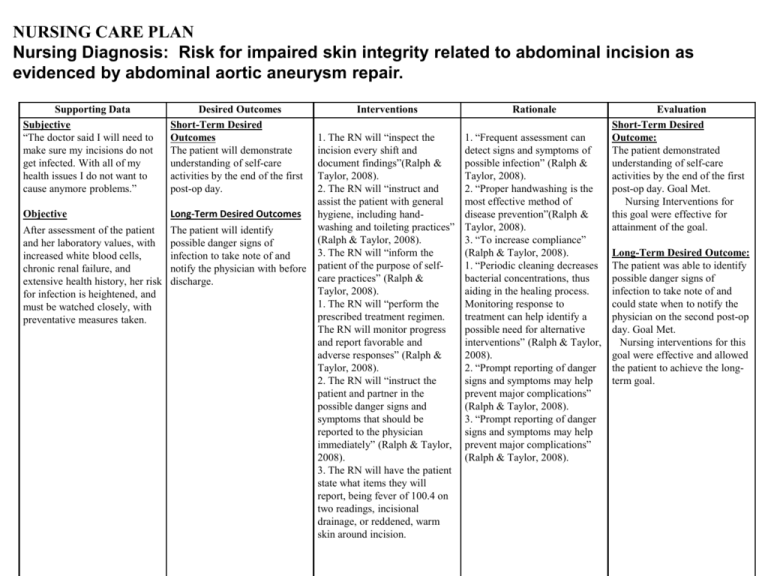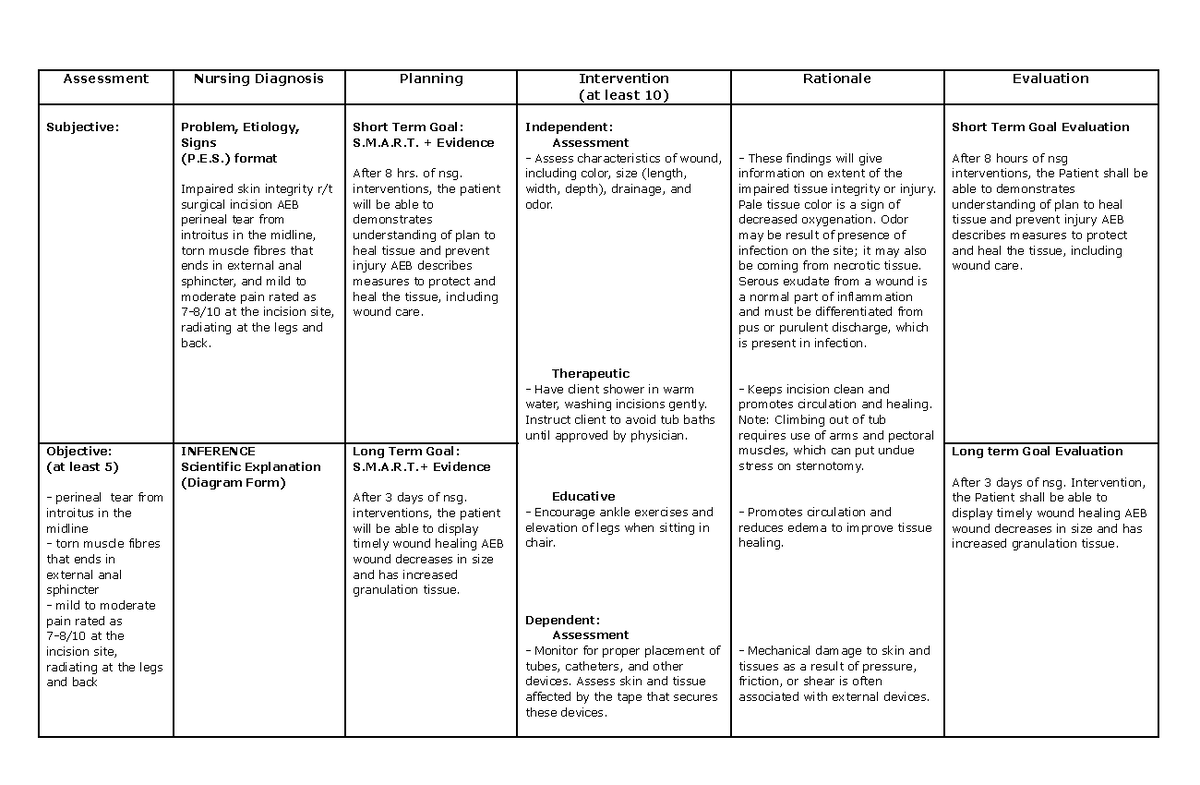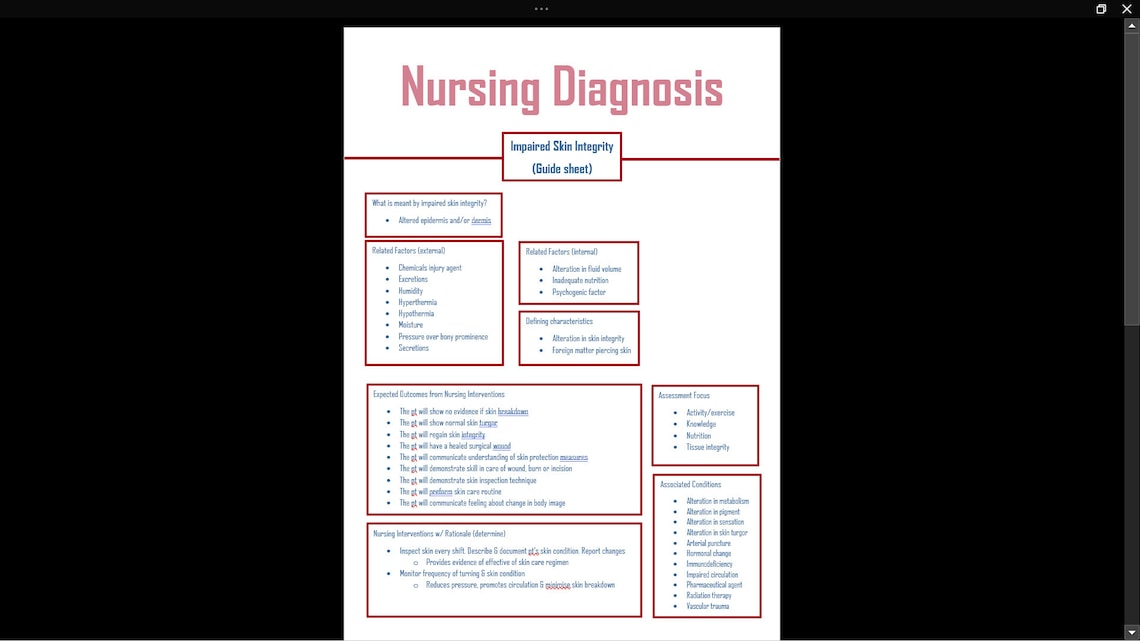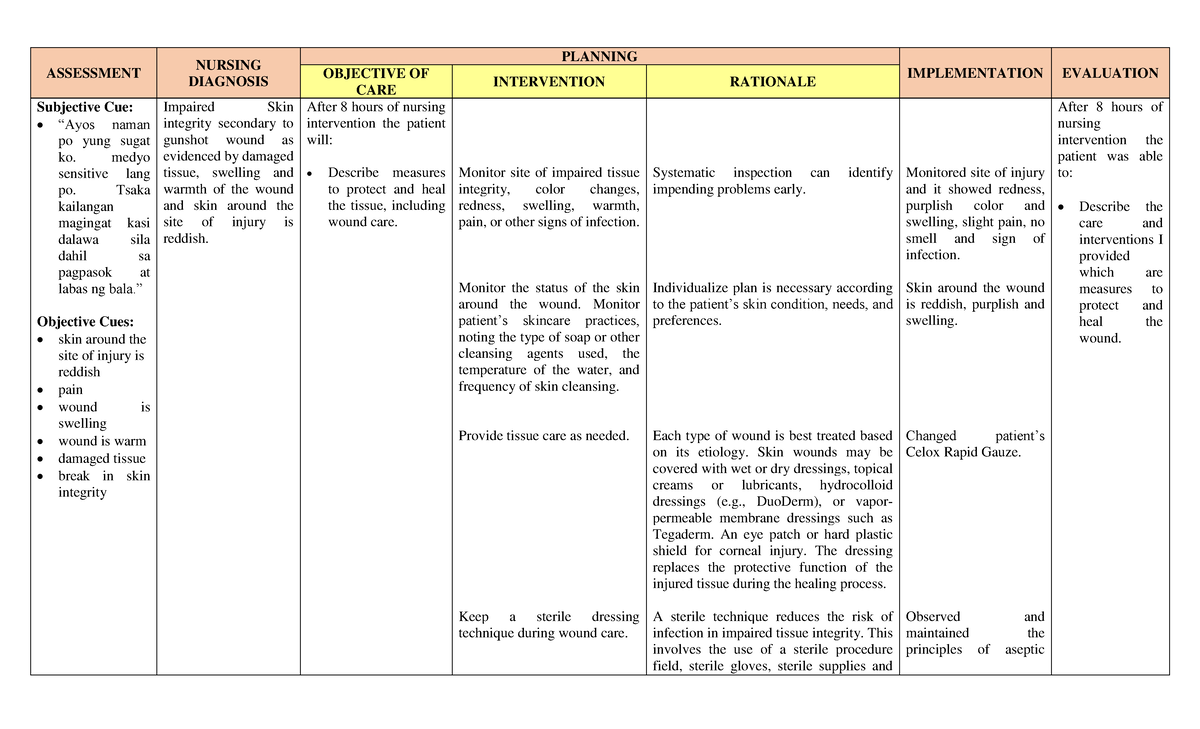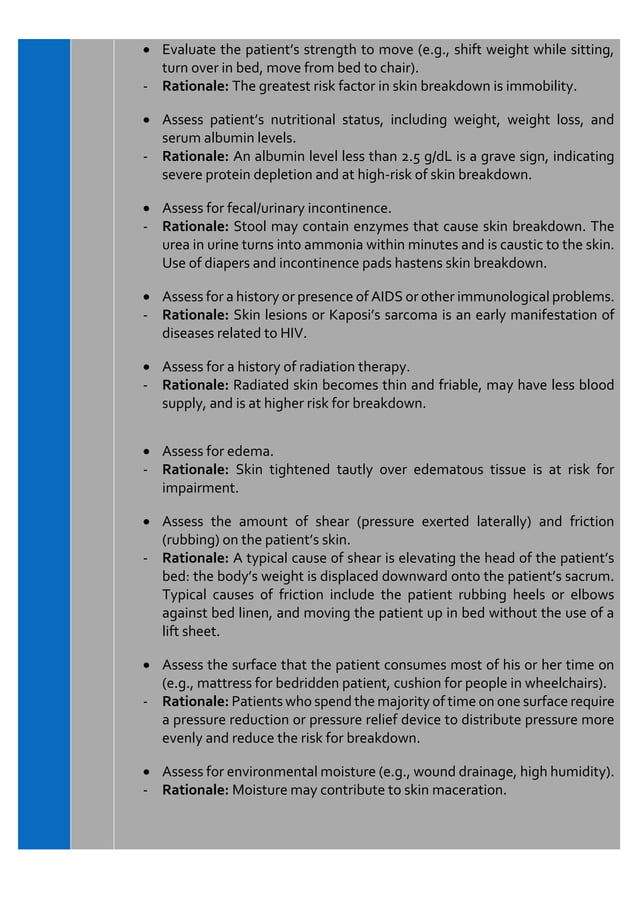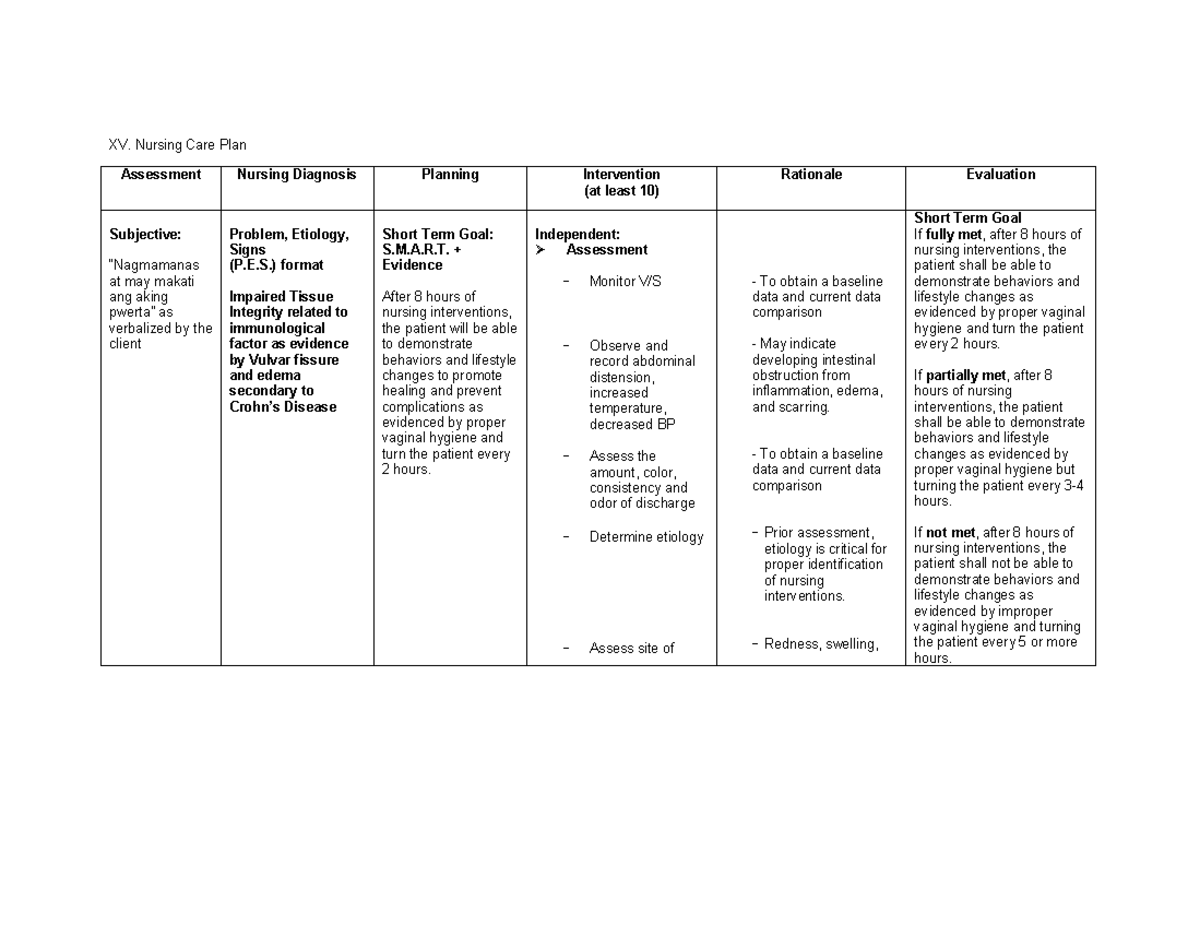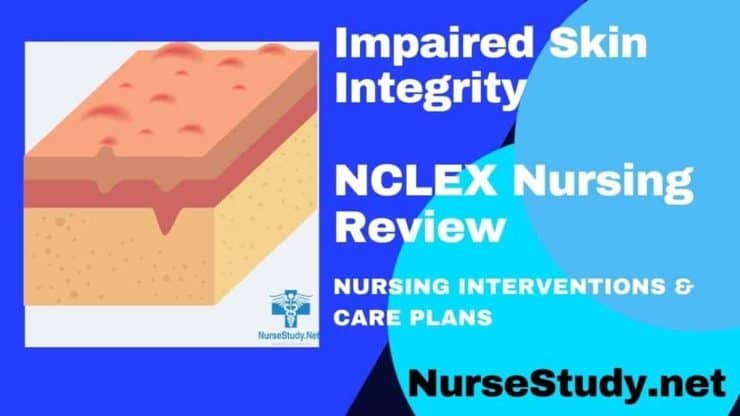Nursing Interventions For Risk For Impaired Skin Integrity
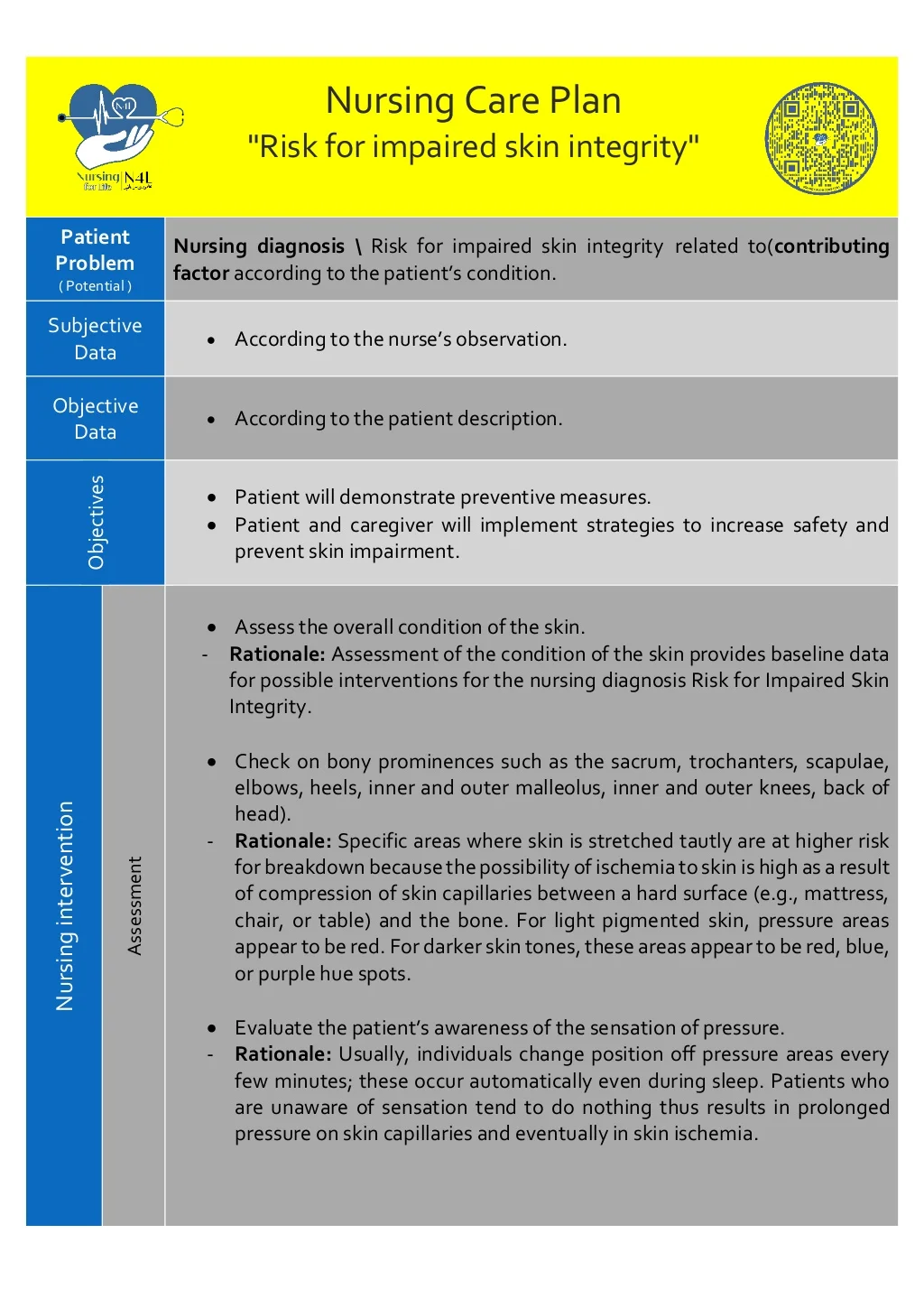
Hospitals nationwide are implementing stricter protocols to combat the escalating rates of pressure injuries among vulnerable patients. New nursing interventions focus on proactive skin assessments and tailored preventative measures to mitigate the risk for impaired skin integrity.
This urgent shift aims to reduce patient suffering, lower healthcare costs, and improve overall care quality by prioritizing skin health from admission through discharge.
Risk Factors and Assessment
Identifying patients at risk is the first critical step. Immobility, poor nutrition, incontinence, and altered mental status are key risk factors for skin breakdown.
Nurses must conduct thorough skin assessments upon admission and regularly throughout the patient's stay, documenting any areas of concern using standardized tools like the Braden Scale.
Early identification allows for prompt intervention and prevents minor issues from escalating into serious wounds.
Repositioning and Offloading Pressure
Regular repositioning is paramount. Patients should be repositioned at least every two hours, or more frequently if indicated, to relieve pressure on bony prominences.
Specialty mattresses, cushions, and heel protectors are crucial. These devices redistribute pressure and minimize friction, reducing the risk of tissue damage.
Teach patients and their families about proper positioning techniques. It is important to empower them to actively participate in preventative care.
Skin Care and Moisture Management
Maintaining skin hygiene is vital. Cleanse the skin regularly with gentle cleansers and avoid harsh soaps that can strip the skin of its natural oils.
Apply moisturizing creams and barrier ointments to protect the skin from moisture and irritants. Incontinence-associated dermatitis (IAD) is a significant concern.
Promptly address incontinence with appropriate containment products and meticulous skin cleaning. Minimize prolonged exposure to moisture.
Nutrition and Hydration
Adequate nutrition and hydration are essential for skin health. A balanced diet rich in protein, vitamins, and minerals supports tissue repair and regeneration.
Encourage patients to drink plenty of fluids. Dehydration can compromise skin integrity, making it more susceptible to breakdown.
Consult with a registered dietitian for patients with nutritional deficits. Tailored dietary plans can optimize healing and prevent further complications.
Wound Care Management
If a pressure injury develops, prompt and appropriate wound care is crucial. Wound assessment should include staging, measurement, and documentation of characteristics.
Debridement, if necessary, removes dead tissue and promotes healing. Select appropriate dressings based on wound type, exudate level, and overall patient condition.
Monitor the wound closely for signs of infection. Initiate antibiotic therapy as prescribed by a physician.
Education and Communication
Patient and family education is integral to preventing and managing pressure injuries. Teach them about risk factors, preventative measures, and proper wound care techniques.
Effective communication among healthcare providers is essential. Share information about skin condition, interventions, and any concerns during handoffs and team meetings.
Utilize interdisciplinary collaboration. Physicians, nurses, dietitians, and physical therapists can work together to develop a comprehensive plan of care.
Data and Outcomes
Hospitals are tracking the incidence of pressure injuries. Recent data indicates a slight decrease in hospital-acquired pressure injuries following the implementation of these comprehensive interventions.
However, ongoing surveillance and analysis are crucial. They are important to identify areas for improvement and refine preventative strategies.
The Agency for Healthcare Research and Quality (AHRQ) is actively involved. They are supporting research and disseminating best practices for pressure injury prevention.
Next Steps
Ongoing research focuses on developing innovative technologies and therapies. These technologies can further enhance skin integrity and reduce the incidence of pressure injuries.
Continued education and training are paramount for healthcare professionals. These are important to ensure competency in preventative measures and wound care management.
Hospitals must prioritize a culture of skin integrity. They should be able to promote a proactive and collaborative approach to patient care.


